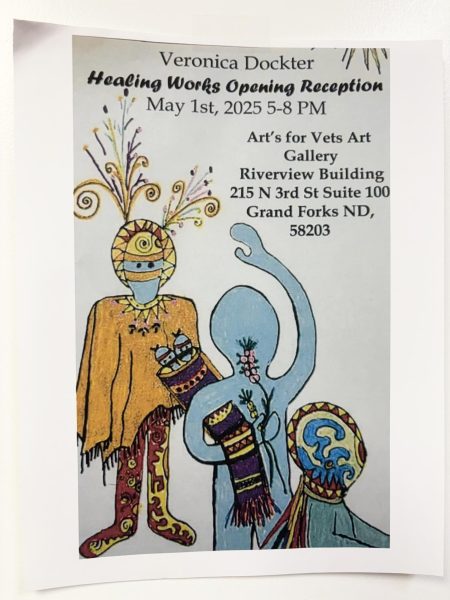Pets help with needs
HEAL: Class at Hyslop reveals uses of pets in occupational therapy at UND.
Students learn about pet therapy as a form of occupational therapy. Photo by Caitlin Duggan.
Anyone who has owned dogs knows what a powerful effect they can have on people’s mental well-being. The people of Pet Partners believe dogs are capable of much more than simply being man’s best friend.
Wednesday morning, a classroom in the Hyslop was packed, as UND students came to see speaker Laurel Johnson and her special guest, certified therapy dog Molly, present about the uses of pets in occupational therapy.
“We are always continually learning and open to new ideas, and it is really exciting for us to learn from different perspectives about our profession and continue our education,” said Taylor LaVoi, vice president of the Students of Occupational Therapy Association, which facilitated Johnson’s appearance on campus.
Johnson told the story of Sasha, “the angel who sheds” and how a dog can help elderly people and children overcome severe health-related challenges. A video presented showed Sasha calming distressed individuals.
Therapy animals like Sasha have succeeded in treating humans’ ailments where other therapy processes have failed, according to Johnson.
“My main goal with this presentation is education, to let people know about Pet Therapy and how it affects quality of life,” she said. “My favorite part about the presentation is (the students’) enthusiasm.”
Getting involved
During the presentation, Johnson told students how to get their own pets certified as therapy animals. There are specific qualifications necessary for a dog to become a certified therapy dog, according to Johnson.
“The dog must be at least a year old. They need to have some obedience school experience, and they need to be comfortable around other people,” she said. “They cannot have bitten anyone in the past.”
Potential dogs also must go through training to be prepared for the sometimes uncomfortable realities of occupational therapy.
“The training involves basic obedience class … and practice with equipment such as crutches, wheelchairs and walkers, so your dog is used it,” Johnson said.
The strict requirements are not just for the dogs. Owners, too, have to take the time to train.
According to Johnson, it is extremely important both dog and patient are comfortable wherever they decide to go together, otherwise it could have the opposite of the intended effect.
“If a dog does not look comfortable around the patient, they might start thinking, ‘She doesn’t like me, of course, nobody likes me, etc.’” said Johnson when talking about the importance of both the person and the dog enjoying their relationship.
Johnson, who volunteers her time to Pet Partners, finds that the human-dog relationship benefits both species.
“What I like about Pet Partners is that they train both ends of the leash,” she said. “The owner has to be able to handle complex situations should they arise.”
Michael Rauser is a staff writer for The Dakota Student. He can be reached at michael.rauser@my.und.edu.







